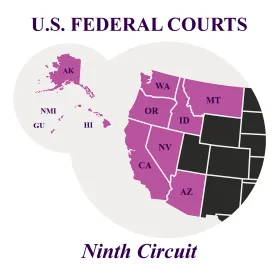On September 20, 2021, in Pirani v. Slack Technologies, Inc.,1 a divided panel of the U.S. Court of Appeals for the Ninth Circuit held that investors who purchase stock in a “direct listing”—in which pre-existing shares are sold to the public without underwriters—may bring claims based on alleged misrepresentations in a registration statement, even if they cannot demonstrate that they acquired registered shares. In a direct listing, the company does not issue any new shares and instead files a registration statement “solely for the purpose of allowing existing shareholders to sell their shares” on an exchange.2 For reasons explained below, however, both registered and unregistered shares may be available to the public via a direct listing.
The majority explained that Sections 11 and 12(a)(2) of the Securities Act of 1933 permit such claims, even by purchasers of unregistered shares, because, in a direct listing, a single registration statement allows both registered and unregistered shares to be made available to investors. Further, in the majority’s view, negative consequences would result from a contrary ruling, including incentivizing issuers to conduct direct listings, instead of underwritten IPOs, to evade liability for “overly optimistic” registration statements, and upending investors’ ability to seek redress under laws in place almost 90 years. That prompted a sharp dissent from Judge Eric D. Miller, who accused the majority of ignoring the statutory text and abandoning precedent in favor of its preferred policy outcome.
Pirani permits direct-listing investors to bring Sections 11 and 12(a)(2) claims for now, but it is unlikely to be the final word on the matter. The Pirani defendants may move for rehearing before an en banc Ninth Circuit. And even if that effort fails, the dissent offers a framework for future defendants to challenge such claims in other circuits. Given the implications for investors and issuers, including how shares come to the public moving forward, Pirani and its aftermath will be worth watching.
Background
Corporations traditionally have issued stock to the public through a firm commitment initial public offering, known as an “IPO.” In an IPO, the corporation issues new shares, which it registers with the SEC via a registration statement.3 The corporation also engages an investment bank to underwrite the offering—that is, the bank commits to purchase the shares in the offering and assumes the risk that it can resell those shares to investors. To maintain price stability while that occurs, the investment-bank underwriter typically requires a months-long “lock-up” period in which existing shareholders—those that previously acquired shares pre-IPO through private placement—cannot sell their unregistered shares, i.e., those not being sold in the IPO pursuant to the registration statement. As a consequence, investors who purchase shares in an IPO necessarily acquire registered shares, subject to the registration statement, since no unregistered shares can be sold at that time.
In 2018, the SEC approved an amendment to Section 102.01B of the New York Stock Exchange’s Listed Company Manual allowing for the direct listing of shares.4 The amended rule permits issuers, among other things, to list pre-existing, outstanding shares on the exchange, without an underwritten offering, “at the time of effectiveness of a registration statement filed solely for the purpose of allowing existing shareholders to sell their shares.”5 The rule, however, does not require registration of shares exempt from the registration requirement under SEC Rule 144.6 The holders of such unregistered shares, thus, may sell their shares at the time of the direct listing, since there is no underwriter to impose a lock-up requirement. As a result, in a direct listing, unlike an IPO, both registered and unregistered shares may reach the public at the same time.
A typical investor cannot know whether the shares it acquires in a direct listing are registered or unregistered. From the investor’s perspective, it simply places an order with its broker, who obtains the shares without knowledge of where they originated. This raises an issue under Sections 117 and 12(a)(2)8 of the Securities Act, which permit private suits based on alleged misrepresentations contained in a registration statement or prospectus, respectively.9 Both require a linkage between the shares purchased and the specific offering to which the registration statement or prospectus applies. A plaintiff may sue under Section 11 only if it acquires securities “actually issued in the offering for which the plaintiff claims there was a false or misleading registration statement.”10 Likewise, under Section 12(a)(2), a plaintiff must “plead and prove that it purchased a security directly . . . as part of the [offering], rather than in the secondary market.”11
The issue came to a head when Slack Technologies, Inc.— the developer of the well-known workplace messaging service—went public through a direct listing in June 2019. After filing a registration statement, Slack simultaneously released to the public 118 million registered shares and 165 million unregistered shares. In September 2019, Fiyyaz Pirani, who acquired 30,000 shares in the direct listing, filed a class-action complaint in the Northern District of California, alleging that Slack’s registration statement contained inaccurate and misleading statements in violation of Sections 11 and 12(a)(2).12 The defendants moved to dismiss, arguing that Pirani lacked standing to sue because he could not show that his shares were registered and, thus, subject to the registration statement. The district court, however, rejected the argument, reasoning that even if Pirani acquired only unregistered shares, those were “of the same nature” as the registered shares, so the distinction did not matter. Although denying the motion to dismiss, the district court certified its order for interlocutory appeal, and the Ninth Circuit permitted defendants’ appeal under 28 U.S.C. § 1292(b).
The Ninth Circuit’s Decision
A divided panel of the Ninth Circuit affirmed, ostensibly grounding its ruling in the statutory text of Sections 11 and 12(a)(2).13 Section 11 permits suits by “any person acquiring such security,”14 which courts have held to mean “a security issued under a specific registration statement, not some later or earlier statement.”15 In the majority’s view, purchasers of both registered and unregistered shares in a direct listing acquire those shares “under” a single registration statement, i.e., the one “filed solely for the purpose of allowing existing shareholders to sell their shares.”16 That is because the same registration statement—albeit expressly covering only registered shares—“makes it possible to sell both registered and unregistered shares to the public.”17 Similarly, under Section 12(a)(2), all direct-listing investors acquire their shares “by means of” the same “prospectus” because “the prospectus [is] a part of the offering materials (i.e. the registration statement and prospectus) that permit[s] the shares to be sold to the public.”18 Accordingly, the majority held that regardless of whether Pirani acquired registered or unregistered shares, he had standing to sue all the same.
The majority, however, also had public policy on its mind, emphasizing what it perceived to be dire consequences if it ordered dismissal of Pirani’s claims. According to the majority, “interpreting Section 11 to apply only to registered shares in a direct listing context would essentially eliminate Section 11 liability for misleading or false statements made in a registration statement in a direct listing for both registered and unregistered shares.”19 If that were so, the majority observed, “from a liability standpoint it is unclear why any company, even one acting in good faith, would choose to go public through a traditional IPO if it could avoid any risk of Section 11 liability by choosing a direct listing.”20 Moreover, “companies would be incentivized to file overly optimistic registration statements accompanying their direct listings in order to increase their share price, knowing that they would face no shareholder liability under Section 11 for any arguably false or misleading statements.”21 That would “create a loophole large enough to undermine the purpose of Section 11 for any arguably false or misleading statements.”22 The majority avoided this outcome by declining to distinguish between registered and unregistered direct-listing shares.
The majority’s policy-based inclinations prompted a vigorous dissent by Judge Eric D. Miller, who would have ordered dismissal of all plaintiff’s claims.23 Also paying homage to the statutory text, Judge Miller explained that for over 50 years courts have narrowly interpreted “such security” to mean “a security issued pursuant to the registration statement.”24 Meanwhile, courts have rejected broader interpretations, such as “a security of the same nature as that issued pursuant to the registration statement.”25 Indeed, the Ninth Circuit previously held that the statute “requires the plaintiff to ‘have purchased a security issued under that, rather than some other, registration statement.’”26 In Judge Miller’s view, the implication of this precedent, including for Section 12(a)(2) claims,27 was that plaintiffs must acquire registered shares, issued pursuant to the specific registration statement under attack—or else relinquish hope for recovery. In a rebuke to the majority, Judge Miller noted that “a statute is not ‘a chameleon, its meaning subject to change based on the varying facts of different cases.”28
Implications
Pirani extends the principal tools for private enforcement under the Securities Act—Sections 11 and 12(a)(2)—to direct listings, even if plaintiffs cannot demonstrate that they purchased registered shares. As long as Parini’s holding remains the law, the “parade of horribles” envisioned by the majority will not come to pass: investors in direct listings will not be foreclosed from pursuing claims, and issuers will not be incentivized to conduct direct listings—as opposed to IPOs—so they can craft “overly optimistic registration statements” free from the specter of liability.29 Rather, issuers will choose between direct listings and IPOs based on whether they wish to enjoy the safety net of an underwritten offering, or avoid the costs and lock-up period that come with it, not, as the majority feared, based on liability considerations. Investors, meanwhile, will be able to assert Securities Act claims arising out of direct listings and IPOs, just the same.
The majority and dissent both framed the debate as turning on the meaning of specific phrases— “any such security” in Section 11 and “by means of a prospectus” in Section 12(a)(2). The reality, however, is that both phrases, as a textual matter, have no clear or absolute meaning. Not surprisingly, then, the focus turned not to the inherent meaning of these words, but to how courts have construed the phrases in the past and how that precedent applies today. On this point, Judge Miller may have the stronger of the argument. Judge Miller cited a litany of cases in which courts, including the Ninth Circuit, have taken a narrow view of the statutory text, holding that “such security” requires a plaintiff to “have purchased a security issued under that, rather than some other, registration statement.”30 The cases cited by Judge Miller are distinguishable, involving, unlike a direct listing, situations in which more than one registration statement is on file, and the plaintiffs thus cannot demonstrate which applies to their shares. Nonetheless, the majority failed to cite any precedent for its flexible interpretation of Sections 11 and 12(a)(2), conceding that “this is a case of first impression.”31 Even the majority’s public policy point is subject to debate since even if Section 11 and 12(a)(2) claims by purchasers in a direct listing would be precluded absent evidence of a purchase of registered shares, those same shareholders could assert claims for violations of Section 10(b). Because Section 10(b) requires evidence of, among other things, scienter and reliance, it is far more difficult to plead and prove than claims under Sections 11 and 12(a)(2). Nonetheless, direct-listing plaintiffs are not bereft of a remedy for fraud.
Given the sharp difference of opinion between majority and dissent, it is doubtful that Pirani will be the final word on the question. The Pirani defendants may move for rehearing before an en banc Ninth Circuit, which could issue a superseding decision.32 Even if the majority’s holding survives, Pirani only will govern courts within the Ninth Circuit, leaving defendants ample opportunity to try their hand at Judge Miller’s approach elsewhere. Since a circuit split has not yet arisen, the Supreme Court is unlikely to weigh in on the issue now, but that is not out of the question in the future. As courts consider the matter, judicial philosophy will loom large: will courts narrowly construe the statutory text and strictly apply precedent, or be swayed by policy implications, including a perceived weakening of the protections of the securities laws that could result from their ruling?33 Only time will tell.
FOOTNOTES
1 13 F.4th 940 (9th Cir. 2021).
2 NYSE Listed Company Manual § 102.01B n. E (2021).
3 15 U.S.C. § 77e(c).
4 See Order Granting Accelerated Approval of NYSE Proposed Rule Change Relating to Listing of Companies, Exchange Act Release No. 34-82627, 83 Fed. Reg. 5650, 5653-54 (Feb. 2, 2018).
5 NYSE Listed Company Manual § 102.01B n. E. The SEC approved a second amendment to Section 102.01B in 2020, allowing the company, in addition to pre-existing shareholders, to sell shares to the public in a direct listing. See Order Approving a Proposed Rule Change to Modify the Provisions Relating to Direct Listings, Exchange Act Release No. 34-90768, 85 Fed. Reg. 85,807, 85,808 (Dec. 29, 2020).
6 Shares may be exempt from registration if they meet certain enumerated requirements set forth in Rule 144, including a minimum holding period and adequate publicly available information about the issuer. See 17 C.F.R. § 230.144; see also SEC Investor Publication, Rule 144: Selling Restricted and Control Securities (Jan. 16, 2013)
7 15 U.S.C. § 77k(a) (“In case any part of the registration statement, when such part became effective, contained an untrue statement of a material fact or omitted to state a material fact required to be stated therein or necessary to make the statements therein not misleading, any person acquiring such security . . . may, either at law or in equity, in any court of competent jurisdiction, sue . . . .”).
8 15 U.S.C. § 77l(a)(2) (“Any person who-- . . . offers or sells a security . . . by the use of any means or instruments of transportation or communication in interstate commerce or of the mails, by means of a prospectus or oral communication, which includes an untrue statement of a material fact or omits to state a material fact necessary in order to make the statements, in the light of the circumstances under which they were made, not misleading . . . shall be liable . . . to the person purchasing such security from him . . . .”).
9 The word “prospectus” is a “term of art” that refers to “a document soliciting the public to acquire securities from the issuer.” Gustafson v. Alloyd Co., 513 U.S. 561, 1070 (1995). A prospectus is “treated as part of the company’s registration statement for purposes of § 11.” In re Century Aluminum Co. Sec. Litig., 729 F.3d 1104, 1106 (9th Cir. 2013)
10 Guenther v. Cooper Life Scis., Inc., 759 F. Supp. 1437, 1439 (N.D. Cal. 1990).
11 In re Wells Fargo Mortgage-Backed Certificates Litig., 712 F. Supp. 2d 958, 966 (N.D. Cal. 2010).
12 Pirani alleged that Slack’s registration statement was inaccurate and misleading because it did not reveal (i) that Slack’s service agreements had generous terms, which required it to pay customers whenever service was disrupted, (ii) that service disruptions were frequent, and (iii) that Slack was facing significant competition from Microsoft Teams, another messaging service. Pirani, 13 F.4th at 944.
13 The panel consisted of Chief Judge Sidney R. Thomas, Circuit Judge Eric D. Miller, and Jane A. Restani, Judge for the United States Court of International Trade, sitting by designation.
14 15 U.S.C. § 77k(a).
15 Pirani, 13 F.4th at 946.
16 NYSE Listed Company Manual § 102.01B n. E.
17 Pirani, 13 F.4th 947.
18 Id.
19 Id. at 948.
20 Id.
21 Id.
22 Id.
23 Judge Miller, a former partner at Perkins Coie LLP, was nominated to the bench on January 23, 2019 by President Trump, and confirmed by the U.S. Senate on February 26, 2019 by a 53-46 vote.
24 Pirani, 13 F.4th at 951-52 (Miller, J., dissenting) (quoting Barnes v. Osofsky, 373 F.2d 269, 271-72 (2d Cir. 1967)).
25 Id.
26 Id. at 952 (quoting Hertzberg v. Dignity Partners, Inc., 191 F.3d 1076, 1080 (9th Cir. 1999)); see also Century Aluminum, 729 F.3d at 1106 (reiterating that “such security” means that the shares were “issued under the allegedly false or misleading registration statement”).
27 Judge Miller reasoned that Section 12(a)(2) applies to securities “offer[ed] or s[old] . . . by means of a prospectus,” and a prospectus refers to “a document that describes a public offering of securities by an issuer or controlling shareholder.” Pirani, 13 F.4th at 953 (citations omitted). Therefore, the “unambiguous meaning of a security offered or sold ‘by means of a prospectus’ is . . . a registered security sold in a public offering.” Id. at 954.
28 Id. at 952 (quoting Clark v. Martinez, 543 U.S. 371, 382 (2005)).
29 Id. at 948.
30 Pirani, 13 F.4th at 952 (quoting Hertzberg, 191 F.3d at 1080); see also Plumbers’ Union Local No. 12 Pension Fund v. Nomura Asset Acceptance Corp., 632 F.3d 762, 768 & n.5 (1st Cir. 2011); Rosenzweig v. Azurix Corp., 332 F.3d 854, 873 (5th Cir. 2003); Lee v. Ernst & Young, LLP, 294 F.3d 969, 975-78 (8th Cir. 2002); Joseph v. Wiles, 223 F.3d 1155, 1159-60 (10th Cir. 2000); APA Excelsior III L.P. v. Premiere Techs., Inc., 476 F.3d 1261, 1271 (11th Cir. 2007); Century Aluminum, 729 F.3d at 1106.
31 Pirani, 13 F.4th at 946.
32 Order, Pirani v. Slack Techs., Inc., No. 20-16419 (9th Cir. Sept. 28, 2021), Doc. No. 58 (extending defendants’ time to move for rehearing to November 3, 2021).
33 Judge Miller signaled his philosophy in written responses in connection with his nomination to the bench. Judge Miller explained that (i) “a panel is bound to follow the decisions of prior panels and may depart from circuit precedent only if an intervening Supreme Court decision has ‘undercut the theory or reasoning underlying the prior circuit precedent in such a way that the cases are clearly irreconcilable,’” and (ii) “[a]s a general matter . . . it is a judge’s duty to follow the law, leaving the consideration of practical consequences to the political branches.” Nomination of Eric David Miller to the U.S. Court of Appeals for the Ninth Circuit, Questions for the Record, Questions from Senator Feinstein at 1, 3 (Oct. 31, 2018), (citations omitted).







 />i
/>i
